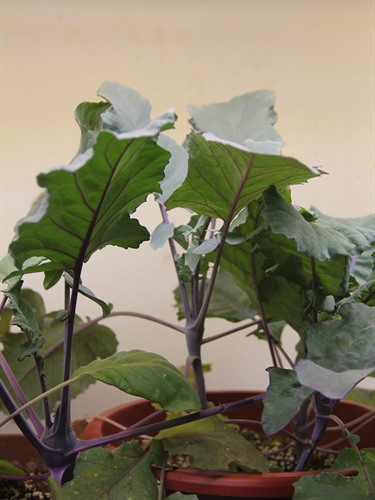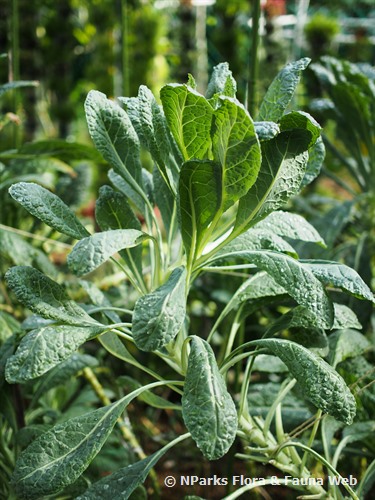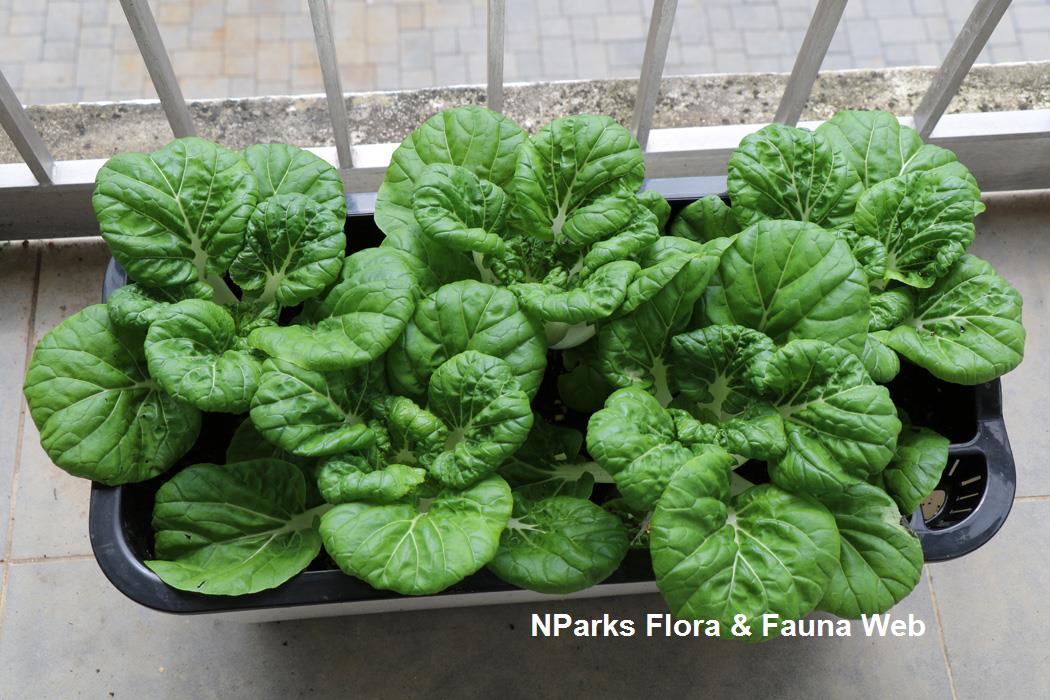
Back
Brassica rapa Pak Choi Group [nai bai cai]
| Family Name: | Brassicaceae (Cruciferae) |
| Common Name: | Baby White Pak Choi, Dwarf Pak Choi, Boy Choy Sum, Milk Cabbage, 奶白菜 |
Name
Classifications and Characteristics
| Plant Division | Angiosperms (Flowering Seed Plants) (Dicotyledon) |
|---|---|
| Plant Growth Form | Herbaceous Plant |
Description and Ethnobotany
| Growth Form | Biennial herb. |
|---|---|
| Foliage | Miniature leaves are densely packed in bushy, erect heads (14 cm long, 9 cm wide). The petiole (leaf stalk) is smooth and white (4 cm long, 2.5 cm wide). The leaf blade is dark green, curled and wrinkled (7 cm long, 9 cm wide). |
| Ethnobotanical Uses | Edible Plant Parts : Edible Leaves Food (Fruit or Vegetable): The leaves are cooked individually or as intact heads. Stir frying them briefly with garlic and ginger is a popular method of cooking. They have a crisp texture and mild, slightly sweet flavour. |
Plant Care and Propagation
| Light Preference | Full Sun |
|---|---|
| Water Preference | Moderate Water |
| Plant Growth Rate | Fast |
| Propagation Method | Seed |
Foliar
| Mature Foliage Colour(s) | Green, White |
|---|---|
| Mature Foliage Texture(s) | Crinkled / Twisted |
| Foliar Type | Simple / Unifoliate |
| Foliar Arrangement Along Stem | Rosulate / Rosette |
| Foliar Attachment to Stem | Petiolate |
| Foliar Shape(s) | Non-Palm Foliage |
| Foliar Venation | Pinnate / Net |
References
| References | Larkcom, J.. 2007. Oriental Vegetables. London: Frances Lincoln Limited. 232 pp |
|---|
Image Repository
Others
| Master ID | 32120 |
|---|---|
| Species ID | 6526 |
| Flora Disclaimer | The information in this website has been compiled from reliable sources, such as reference works on medicinal plants. It is not a substitute for medical advice or treatment and NParks does not purport to provide any medical advice. Readers should always consult his/her physician before using or consuming a plant for medicinal purposes. |

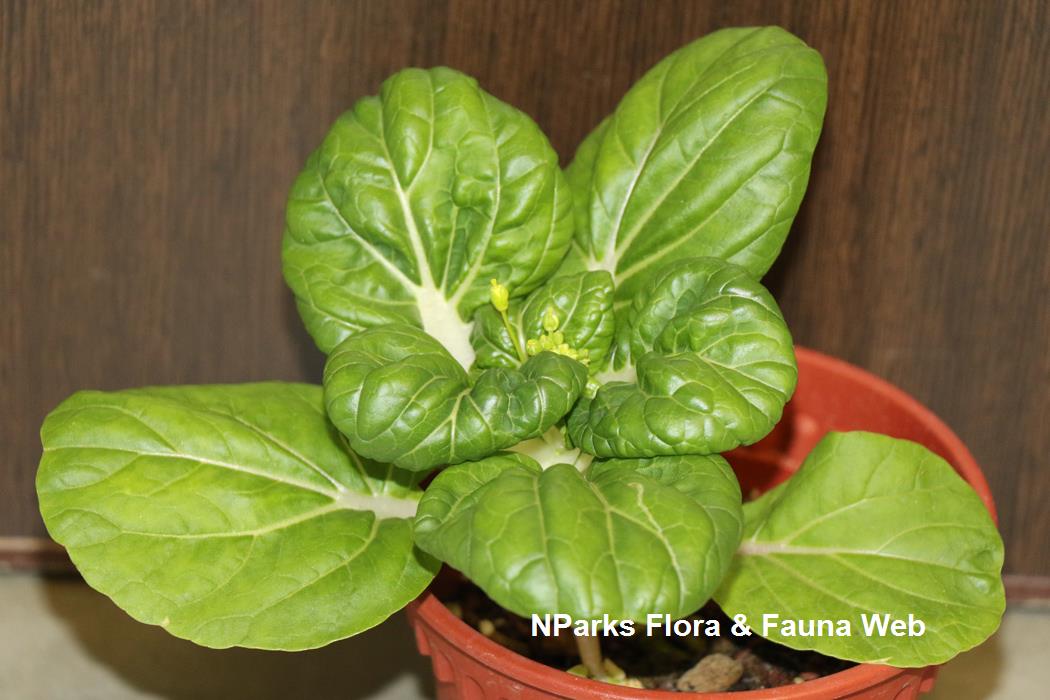
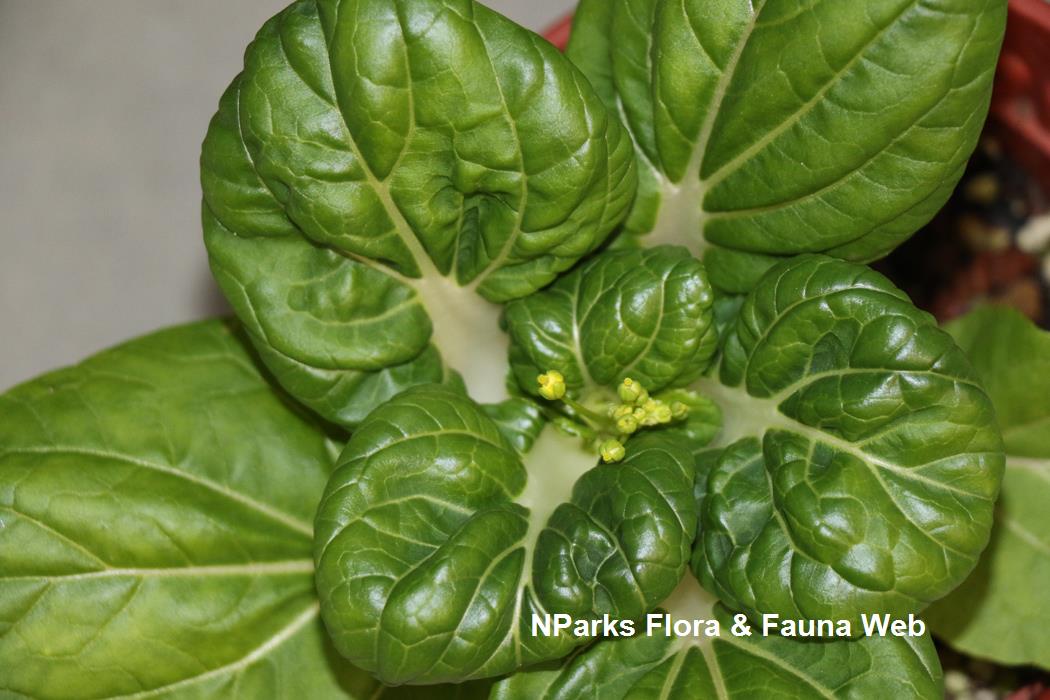
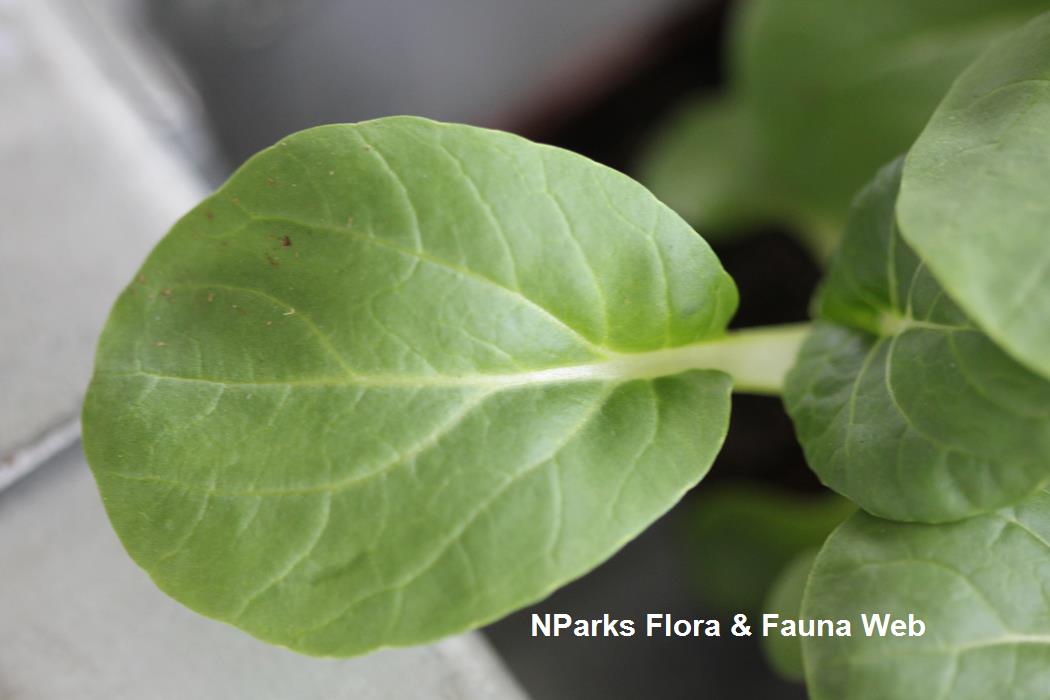


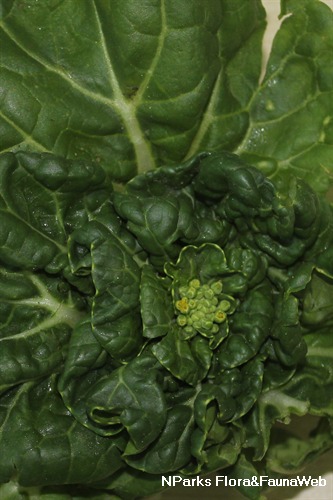

.jpg)

